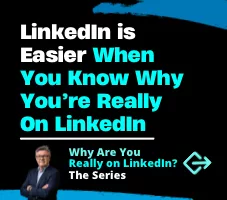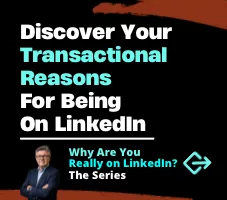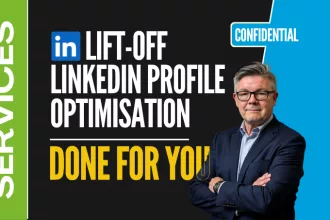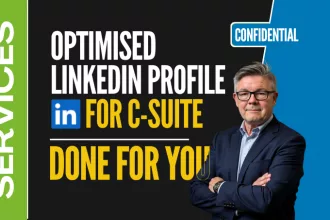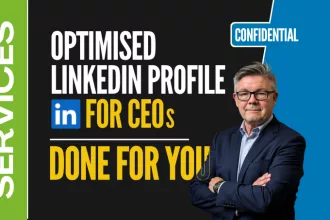Defining Thought Leadership
When you hear the term “thought leader,” what comes to mind? For many, it conjures images of well-known industry experts, influential CEOs, or prolific authors with thousands of followers hanging on their every word. Thought leadership, in this traditional sense, is often seen as the domain of the elite – a title earned only after years of public speaking, publishing books, or leading groundbreaking companies.
But what if thought leadership wasn’t so exclusive? What if thought leadership exists on a spectrum, accessible to everyone willing to share their insights and experiences? The truth is, many of us are already contributing valuable thoughts and ideas in our fields without even realising it.
Thought leadership isn’t a binary status; it’s a journey that many of us are already on, whether we recognise it or not.
The Spectrum of Thought Leadership
Entry-Level Thought Leaders
At the beginning of the spectrum, thought leadership might look very different from the conventional image. Perhaps you’ve shared an insightful comment in a LinkedIn discussion or written a blog post on a topic you’re passionate about. These small but meaningful contributions are often the first steps in establishing yourself as a thought leader.
Consider the professional who regularly shares their experiences or learnings on social media. They might not have a large following, but their insights resonate with their immediate network. This is the essence of entry-level thought leadership—contributing to the conversation in a way that adds value to others, even if on a small scale.
Intermediate Thought Leadership
As you continue along the spectrum, your contributions might start to gain more traction. You’ve likely begun to establish a voice in your industry, consistently creating content that others find useful or inspiring. This might involve writing articles, speaking at industry events, or becoming a recognized expert within a specific niche.
Intermediate thought leaders are those whose opinions and insights are sought after by their peers. They’re not necessarily household names, but within their circles, they’re known as go-to resources for particular topics. They might mentor others, collaborate on projects, or lead discussions that help shape the direction of their field.
Established Thought Leaders
At the far end of the spectrum, we find the established thought leaders—those individuals who have made a significant impact on their industry. These are the people who are frequently invited to keynote conferences, publish best-selling books, or have a large, engaged following across multiple platforms.
These thought leaders have successfully built a strong personal brand, and their insights often influence industry trends or public opinion. While reaching this level requires dedication, consistency, and time, it’s important to remember that it’s still part of the same spectrum that begins with smaller, everyday contributions.
You May Already Be On The Spectrum
The beauty of thought leadership as a spectrum is that many people are already on it – they just might not realise it. Have you ever shared an experience that helped someone else in your field? Written a blog post or an article that received positive feedback? Participated in a panel discussion or a webinar? If so, you’ve already taken steps on the path of thought leadership.
Recognizing your contributions is the first step in embracing your role as a thought leader. You don’t need a massive following or a best-selling book to start making an impact. By consistently sharing your insights, experiences, and unique perspective, you’re contributing to the larger conversation within your industry.
Practical Steps to Move Along the Thought Leadership Spectrum
If you’re interested in furthering your journey as a thought leader, here are a few practical steps you can take:
- Content Creation: Start by writing more frequently. Whether it’s blog posts, LinkedIn articles, or even comments on industry discussions, the more you contribute, the more you’ll establish your voice.
- Networking: Engage with other thought leaders in your field. Comment on their work, share their posts, and build relationships. Networking can help amplify your voice and open up new opportunities for collaboration.
- Public Speaking: If you’re comfortable, start speaking at industry events, webinars, or podcasts. Even small engagements can help build your reputation as a thought leader.
- Strategic Collaborations: Partner with others on projects that align with your expertise. Co-author articles, host joint webinars, or work together on initiatives that highlight your knowledge.
Lastly: Embrace Your Role
Thought leadership is not an exclusive club reserved for a select few. It’s a spectrum that anyone can be on, and chances are, you’re already somewhere along that path. By recognizing your contributions and taking deliberate steps to share your insights, you can move further along the spectrum and make an even greater impact in your field.
Remember, thought leadership is not about being the loudest voice – it’s about making a meaningful contribution. So, take that next step, write that article, share your experience, and embrace your role as a thought leader. You’re likely already on the spectrum – now it’s time to own it.
See also:
- Thought Leadership and Personal Branding should go hand-in-hand, learn the subtle yet importance differences
- Next Steps to Establish Yourself as a Thought Leader on LinkedIn
- Have questions? Want professional guidance and practical advice? Book a 30 Minute Q&A and Consultation
- In case you missed it: What is a Thought Leader on LinkedIn?
How To Use This LinkedIn Series?
LinkedIn can be a huge a time-suck. It’s so much easier and more rewarding when you know why you’re using LInkedIn. This series starts with Why Are You Really On LinkedIn? and helps you drill down through to your Transactional Reasons and/or the Intanglible Motivators that drive you and your activities.
When you know your Why? LinkedIn becomes much easier because you can just focus on the What To Do, be aware of the What Not To Do., and cut the time-suck.
By understanding why you’re really here, you’ll be able to use LinkedIn more effectively and strategically – whether for immediate outcomes or long-term success.



